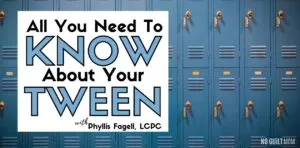6 Things You Might Not Know about State Testing
School has most definitely changed since we were kids. The standards (in Arizona at least) have become tougher with Common Core, mathematics problem solving is becoming a priority and many teachers are shifting a greater focus to critical, complex thinking. All amazing, but there is still one big aspect of education that needs to change: standardized testing. While I think our students need to be challenged, I know that eight-year-olds do not need to prove this through hours of filling in bubbles.
Here’s why:
The Cost
In Arizona, the Arizona State Board of Education awarded at $19 million contract to AIR (Arizona Institutes of Research) to develop the AZMerit test. Meanwhile, it cut overall funding to schools by $92 million.
Teacher’s Can’t Use the Results
Teachers do not see the results of the test until after the school year has ended. I remember the principal called my grade level into her office on the last day of school because she just received the PERCENTAGES of how many students passed. As teachers, we didn’t even know who passed. Individual student data wasn’t available until July and by then, we had completely new classes.
Schools eliminate non-tested subjects
What’s tested is what’s taught. As a fifth grade teacher, I only taught Social Studies and Science for 6 weeks of every school year: the last two weeks of April and entire month of May – when testing was over. Teaching before that consisted of Reading, Math, Writing, Reading Intervention and Math Intervention.
The amount of time required
For fifth graders in AZ, we had a testing session in the morning and one in the afternoon after lunch. Each testing session was slated for an hour, however there was no time limit. Since the test determined the school’s report card, we encouraged our students not to rush. Most students took an hour and a half to finish the test. However, normal class activities could not resume until the entire class was finished. This meant that each session ran for two hours or longer. Once in the morning. Once in the afternoon. For four days straight. Not only that, but the weeks leading up to testing were usually spent on test prep activities.
At many schools, teachers acted as the proctors as well. This was not a sit in front of the room and read or work on lesson plans kind of job. We were on our feet, constantly monitoring the classroom, exchanging dull pencils for sharpened ones and making sure the question number that the student was filling in on the answer sheet matched the question number he or she was working on in the test booklet.
Teachers are not allowed to read test questions
Even though we served as proctors, we signed an agreement with the state that we would not read any of the test questions. If we were caught reading questions, or worse, talking about it with colleagues, we risked having our teaching license suspended.
They tell you less about your child’s school than you think.
Standardized tests at the elementary school level are used for one main purpose: to assess the school. However, the scores don’t tell you as much about the teaching staff as they do about the student population. I taught at a Title I school for five years as a fifth grade teacher. My colleagues were amazing. They were creative, inspiring and worked long hours so that they could be there to help students. Over 92% of our students qualified for free or reduced lunch. Our students did not go on vacations during the summers. They could not enroll in costly after school activities. Many of my fifth-graders were trusted to take care of themselves and siblings after school because their parents were working to make ends meet and could not afford child care.
My school district ranked teachers based on the percentage of the class who passed the state test each year. A few years back, teachers whose students scored in the bottom 25% of the district received a letter informing them so. Teachers whose students scored in the top 25% were named outstanding. Many of the outstanding teachers taught at schools in our district whose families resided in a higher income bracket.
In fact, one teacher in particular received a letter one year informing her that she was in the bottom 25%. She moved to a more affluent school the following year and became a top 25% teacher. The. Very. Next. Year.
Our problem in the US is not the quality of teaching or the quality of our schools. It’s poverty. It’s focusing too much on assessing and not enough on learning. On exploration. On life skills like cooperation, grit and creativity that are the real markers of success in the professional world.
Our schools are not failing. We just need to assess them differently.
Want to read further on this issue? I recommend:











Wow this is insane! I always heard that school testing is ridiculous, but it’s crazier to hear it from the trenches. What especially clicked is how the testing doesn’t even serve the teachers or the students and how the teachers don’t even get the scores til after the year is done. Nuts! I wonder what a better alternative would be and I hope they come up with that soon. p.s. I found you on EBA’s forum and clicked over since you were another parenting blogger 🙂
It is insane. I think a better alternative would be not to test kids until high school. In countries that outperform the US on international tests (such as Japan and Finland) testing is only done once during a student’s entire school career. Instead of funneling the money toward testing, our country should devote funds to teaching salaries in order to retain and attract high quality teachers. We also need to limit class sizes by hiring more teachers.
Thanks for finding me through EBA! I am so excited about it! Off to check out your blog now.
This is a great article and everything rings true. I am a retired special ed teacher and in my particular school test prep began the first day of school and ended on the last day. In fact, our teachers (including me who “bucked the system” daily…..) were told that EVERYTHING we did must be in “test prep” format. That meant that every activity had to include some type of multiple choice evaluation. My heart breaks for those kids, like so many of mine, who needed something more…….I left teaching a few years early because I couldn’t stand what it was doing to my students; “teaching to the test” was depriving my students of valuable learning time because none of them were working on grade level and that was all we were allowed to do. My classroom was at the end of campus and didn’t get too much attention from my principal so as much as I was able for as long as I was able I taught them at their instructional level with techniques and materials designed to help them learn, not take and pass the state test. These two things, learning and passing the test, often had nothing to do with one another…….
That is heart breaking that you had to include a multiple choice evaluation for everything. As teachers we know that kids can show their knowledge in different, perfectly acceptable ways. In fact, multiple choice questions always tell the least about what kids know compared to something that requires an extended explanation. It is super frustrating. I’m hoping if more of us speak up, something will change.
I’m studying to be a teacher and without even teaching yet I was on the right track on how standardized testing is impacting teachers ratings. It is so sad that the ones who make the tests do not realize the other factors that should be taken in consideration when looking at test levels.
It is sad. I’m just hoping the right people catch on soon.
Crazy. I’m not opposed to standardized testing, because it definitely has its merits when used appropriately–but it’s pretty obvious that it’s not being used appropriately.
Yes, testing definitely has it merits. But it is not being used appropriately at all. It’s meant to assess how well students are retaining material compared to grade level peers, so that teachers can help the student. However, using it to judge teachers is ridiculous.